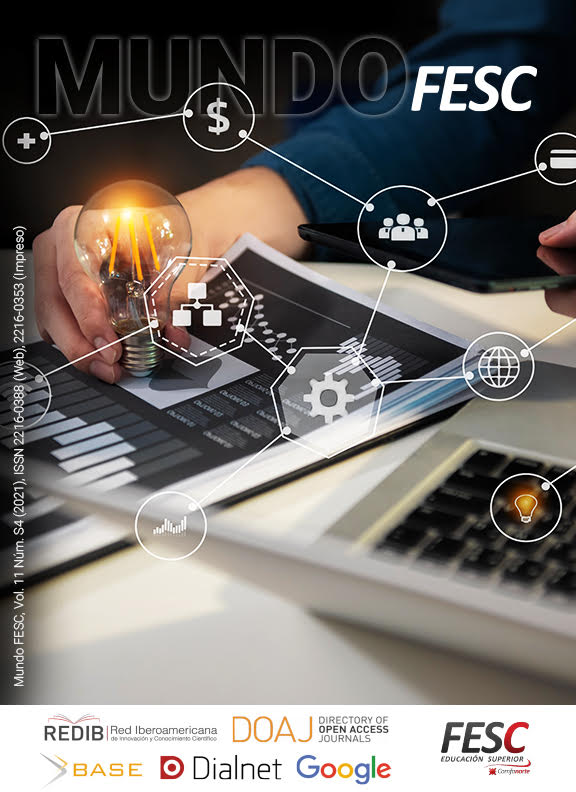Análisis estadístico de la calidad del agua en la planta de tratamiento de agua potable del municipio de Tarqui (Huila, Colombia)
DOI:
https://doi.org/10.61799/2216-0388.930Palabras clave:
estadística , agua potable, agua crudo, varianza, calidad del agua, muestreo de aguaResumen
. El abastecimiento del agua potable es esencial para el desarrollo de las actividades humanas. La presente investigación tuvo como objetivo evaluar estadísticamente la calidad del agua en la planta de potabilización del municipio de Tarqui (Huila, Colombia). Los datos se recopilaron mensualmente durante 6 años, correspondientes a 2010, 2011, 2012, 2013, 2014, y 2016. Se desarrollaron cuatro fases: aplicación descriptiva, excedencia en la calidad del agua tratada comparado con la legislación establecida a nivel mundial y nacional, estimación del índice de riesgo para la calidad del agua potable, índice de calidad del agua y por último la evaluación de remoción de contaminantes para el agua tratada y el agua sin tratar. Para el agua tratada se obtuvo que los parámetros turbiedad (r = 0.58), pH (r =0.69), y cloro residual libre (r = 0.55), fueron los mejores parámetros de control. Los resultados promedios de turbiedad fueron significativamente mayores (2.35 UNT) en los años 2010 y 2011, y menores (0.93 UNT) en los años restantes, el pH indicó valores máximo y mínimo de 7.74 y 6.81 para los meses de abril del año 2013 y febrero del año 2014, la correlación entre DBO5 y DQO fue la mejor (r = 0,99), y los valores medios fueron 7,23 mg / L y 18,40 mg / L, el 33% de los años analizados presento un IRCA de riesgo bajo y el 67% restante presento un IRCA sin riesgo para consumo humano, el ICA evidencia que el agua cruda de la quebrada El Hígado permite el contacto humano. Se concluye que el agua tratada en la planta de potabilización del municipio de Tarqui es apta para consumo humano y no representa amenazas para la salubridad de sus consumidores.
Descargas
Referencias
B. Martinez, “Manejo del recurso hídrico en Colombia: cobertura y calidad del agua potable”, 2019
Ministerio de Vivienda, Ciudad y Territorio, República de Colombia, “Resolución número 0330 de 2017”, junio 2017. [En línea]. Disponible en: https://www.minvivienda.gov.co/sites/default/files/documentos/0330-2017.pdf
M. S. Yessenamanova, G. Kulzhanova, A. E. Tlepbergenova, Z. S. Yessenamanova, G. Batyrbayeva, “Environmental monitoring of water quality in the interstate Ural River”, In Journal of Physics: Conference Series vol 1889, no. 3, pp 032007, April 2021
Instituto de Hidrología, Meteorología y Estudios Ambientales IDEAM, “Índice de calidad del agua en corrientes superficiales (ICA), versión 1,1, 2021
F. Mamani and E. Astorga, “Evaluación de la planta potabilizadora de agua Bolinda de la población de Caranavi del departamento de la Paz, Universidad mayor de San Andrés, Bolivia, 2021
N. Hidalgo, “modelización de datos económicos utilizando series temporales”, Universidad de Jaén, 2021
C. A. Ramírez. Calidad del agua: evaluación y diagnóstico. Universidad de Medellín. Ediciones de la U 2021
H. J. Gallardo, M. Vergel and J. P. Rojas, “Análisis dinámico de series temporales multivariadas”, Mundo Fesc, vol. 10, no. 20, pp. 41-49, July 2020
H. Prambudy, T. Supriyatin, and F. Setiawan, “The testing of chemical oxygen demand (COD) and biological oxygen demand (BOD) of river water in cipager Cirebon”, In Journal of Physics: Conference Series, vol 1360, no. 1, pp. 012010, October 2019
Organización mundial de la salud OMS, “Guías para la calidad del agua de consumo humano”, cuarta edición, Ginebra, 2018
Ministerio de la Protección Social, Ministerio de Ambiente Vivienda y Desarrollo Territorial “Resolución 2115 de 2007” junio 2007. [Online]. Disponible en: https://laboratoriodeanalisis.lasalle.edu.co/wcm/connect/LIAC/d951c109-a227-44a3-8a42-1d1f87db2b43/Resoluci%C3%B3n_2115-2007.pdf?MOD=AJPERES&CVID=lMo0SFe
Ministerio de Agricultura “Decreto 1594 de 1984” junio 1984. [En línea]. Disponible en: https://www.funcionpublica.gov.co/eva/gestornormativo/norma_pdf.php?i=18617
E. Polo, G. Morales, Y. Cabarcas, y J. V. Rodríguez, “Analysis of the water quality risk index for human consumption in urban areas of the department of Bolivar” Materials Science and Engineering, vol 844, no. 1, pp. 012047, May 2020
Superintendencia de servicios públicos domiciliarios, Ministerio de vivienda, ciudad and territorio and Ministerio de salud y protección social, “Informe Nacional de Calidad del agua para consumo humano INCA, (República de Colombia), 2020
A. Aguilar and O. Diaz “Aprendizaje para la predicción de calidad del agua potable, Ingeniare, no. 28, p. 47-62, 2020
O. Akoto, O. Gyamfi, G. Darko, and V. Rex, “Changes in water quality in the Owabi water treatment plant in Ghana”, Applied Water Science, vol 7, no. 1, pp. 175–186, 2017
Y. Tu, H. Li, K. Dong, Q. Li, and L. Jiang, “Purification Efficiency under the Combined Function of 4 Plants on Domestic Sewage” In IOP Conference Series: Earth and Environmental Science, vol. 267, no. 6, pp. 062038, May 2019
A. Marantika, I. Fithriani, and S. Nurrohmah, “Estimating parameter in two-way analysis of variance when variance between cells is heterogeneous”, In Journal of Physics: Conference Series, vol. 1442, no. 1, p. 012043, 2020
L. Álava, L. Marin and N. Gallo, “Evaluación de la calidad del agua para consume humano en la cuenca baja del rio Lelía”, Revista Científica dominio de las Ciencias, vol. 7, núm. 4, pp. 625-648, 2021
S. Agudelo, “Guía para la elaboración y actualización de mapas de riesgo de las fuentes abastecedoras de los acueductos de Medellín”, Universidad de Antioquía, 2021
Descargas
Publicado
Número
Sección
Licencia

Esta obra está bajo una licencia internacional Creative Commons Atribución-NoComercial 4.0.






